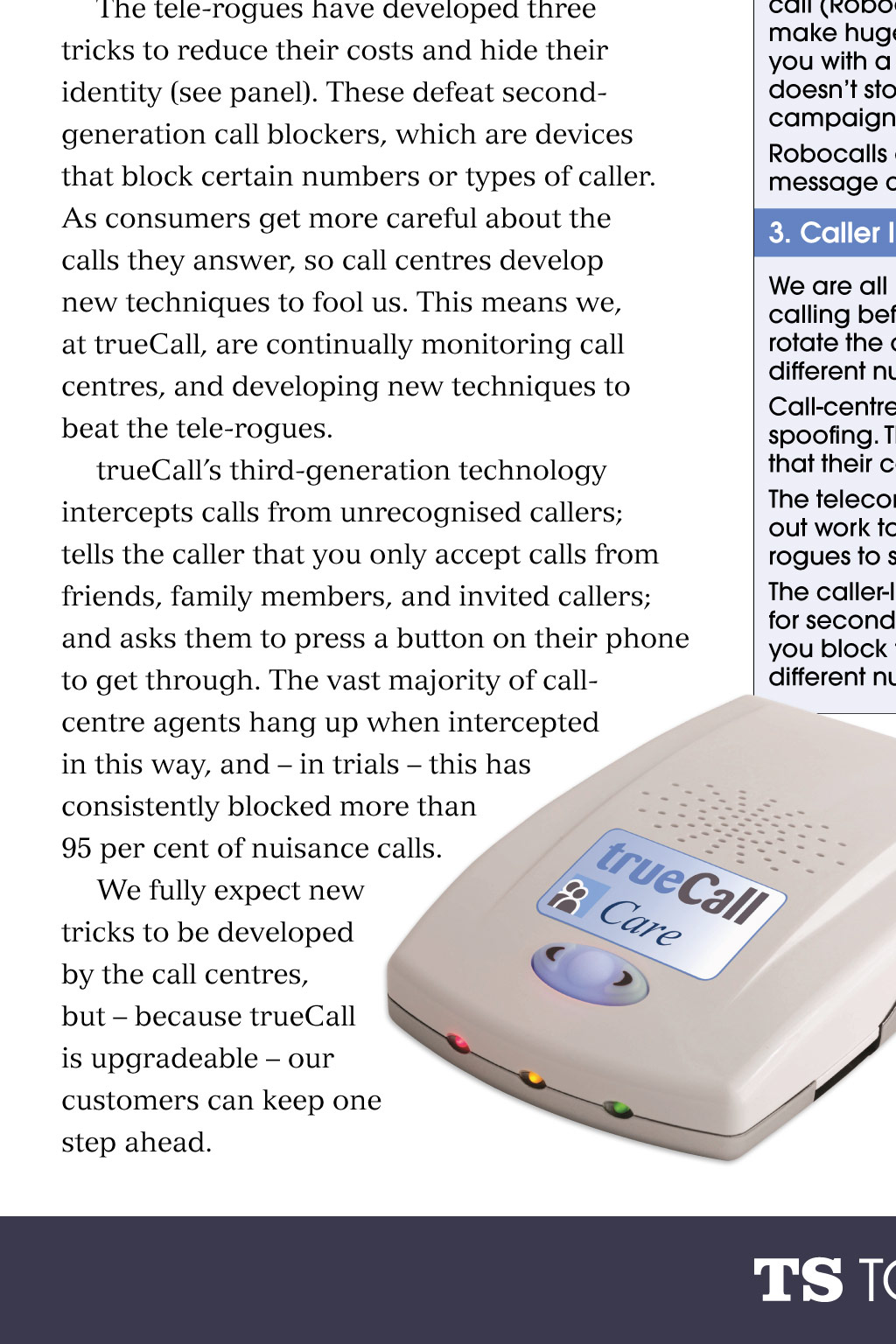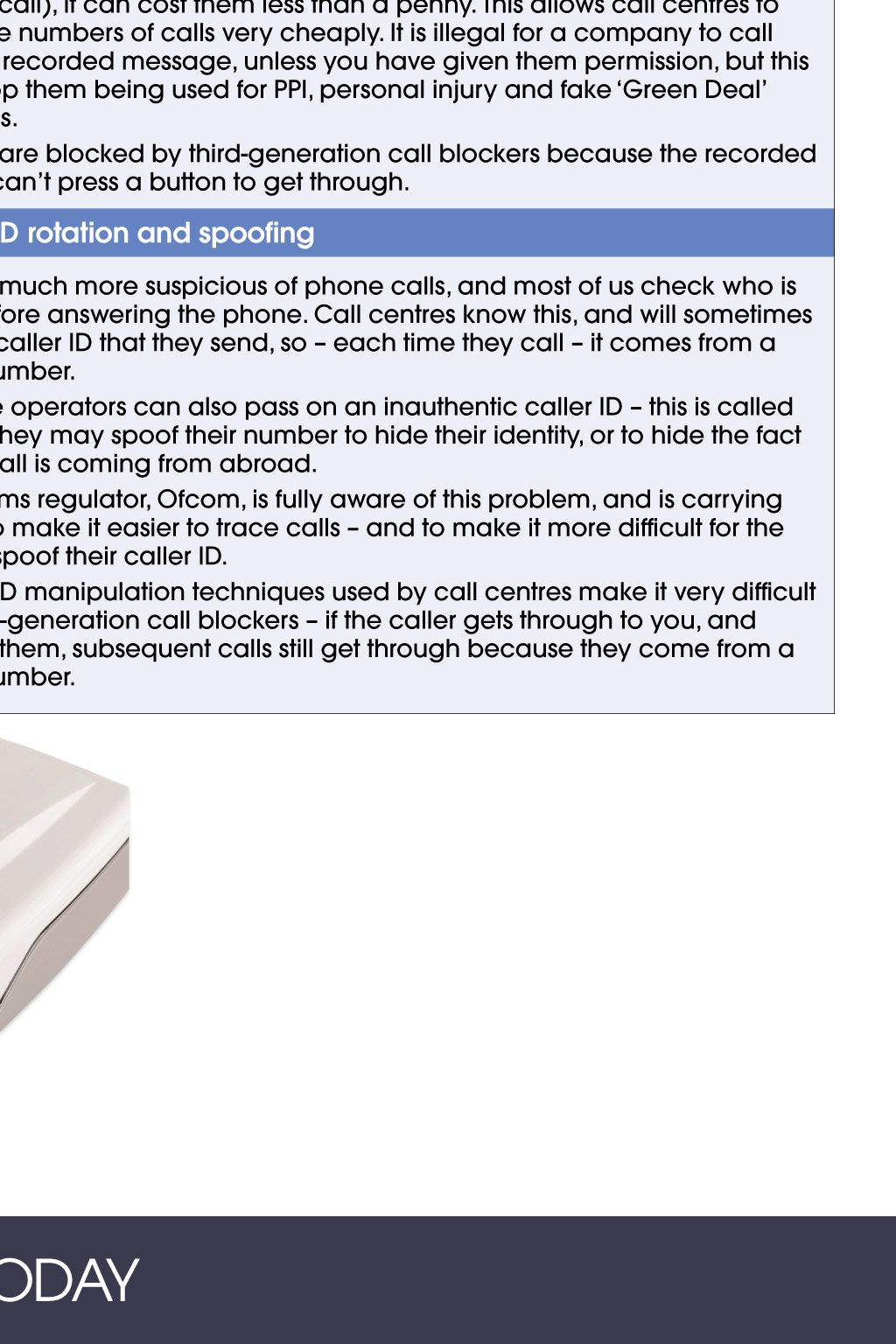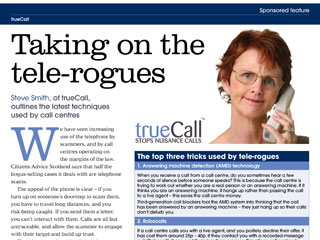








Taking on the tele-rogues Steve Smith, of trueCall, outlines the latest techniques used by call centres W e have seen increasing use of the telephone by scammers, and by call centres operating on the margins of the law. Citizens Advice Scotland says that half the bogus-selling cases it deals with are telephone scams. The appeal of the phone is clear if you turn up on someones doorstep to scam them, you have to travel long distances, and you risk being caught. If you send them a letter, you cant interact with them. Calls are all but untraceable, and allow the scammer to engage with their target and build up trust. The tele-rogues have developed three tricks to reduce their costs and hide their identity (see panel). These defeat secondgeneration call blockers, which are devices that block certain numbers or types of caller. As consumers get more careful about the calls they answer, so call centres develop new techniques to fool us. This means we, at trueCall, are continually monitoring call centres, and developing new techniques to beat the tele-rogues. trueCalls third-generation technology intercepts calls from unrecognised callers; tells the caller that you only accept calls from friends, family members, and invited callers; and asks them to press a button on their phone to get through. The vast majority of callcentre agents hang up when intercepted in this way, and in trials this has consistently blocked more than 95 per cent of nuisance calls. We fully expect new tricks to be developed by the call centres, but because trueCall is upgradeable our customers can keep one step ahead. The top three tricks used by tele-rogues 1. Answering machine detection (AMD) technology When you receive a call from a call centre, do you sometimes hear a few seconds of silence before someone speaks? This is because the call centre is trying to work out whether you are a real person or an answering machine. If it thinks you are an answering machine, it hangs up rather than passing the call to a live agent this saves the call centre money. Third-generation call blockers fool the AMD system into thinking that the call has been answered by an answering machine they just hang up so their calls dont disturb you. 2. Robocalls If a call centre calls you with a live agent, and you politely decline their offer, it has cost them around 25p 40p. If they contact you with a recorded-message call (Robocall), it can cost them less than a penny. This allows call centres to make huge numbers of calls very cheaply. It is illegal for a company to call you with a recorded message, unless you have given them permission, but this doesnt stop them being used for PPI, personal injury and fake Green Deal campaigns. Robocalls are blocked by third-generation call blockers because the recorded message cant press a button to get through. 3. Caller ID rotation and spoofing We are all much more suspicious of phone calls, and most of us check who is calling before answering the phone. Call centres know this, and will sometimes rotate the caller ID that they send, so each time they call it comes from a different number. Call-centre operators can also pass on an inauthentic caller ID this is called spoofing. They may spoof their number to hide their identity, or to hide the fact that their call is coming from abroad. The telecoms regulator, Ofcom, is fully aware of this problem, and is carrying out work to make it easier to trace calls and to make it more difficult for the rogues to spoof their caller ID. The caller-ID manipulation techniques used by call centres make it very difficult for second-generation call blockers if the caller gets through to you, and you block them, subsequent calls still get through because they come from a different number.